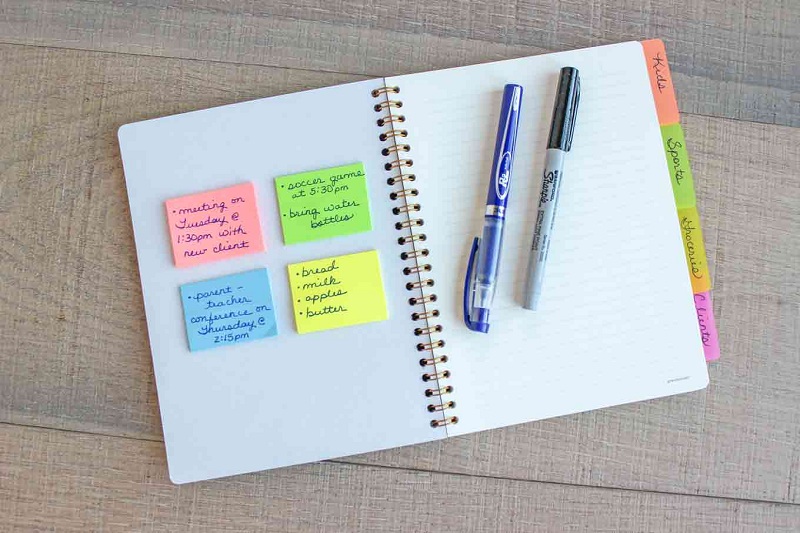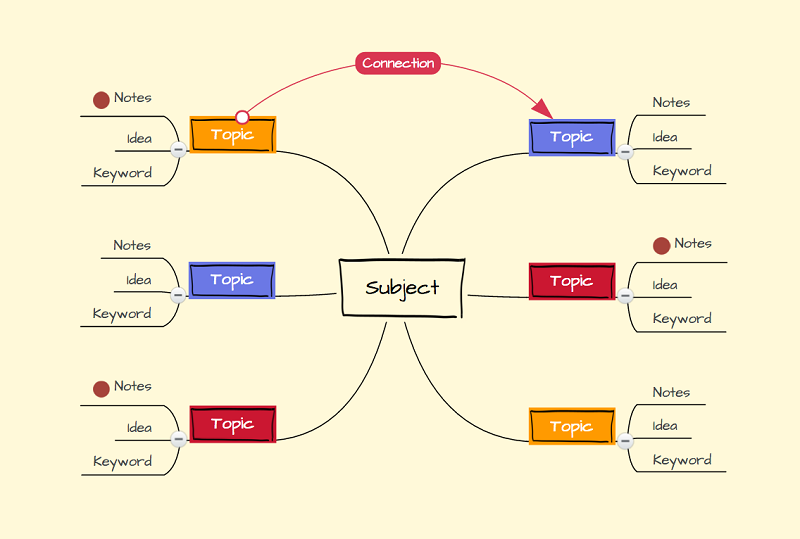Studying textbooks by heart is out of fashion. In addition, the results are usually not very promising. Luckily, there are many other fun and dynamic study techniques that can also improve our results and performance. In this article, we give you 10 easy and different study strategies to promote learning.
10 different study strategies to promote learning
- Underline
- Make your own Notes
- Mind Maps
- Study Cards
- Exercises / Case Studies
- Tests
- Brainstorming
- Mnemonic Rules
- Organize the Study
- Drawings
Different study strategies 1: Underline
Underlining the most important part of the syllabus is one of the simplest and most familiar learning techniques. It is simply to highlight the most significant parts of the text using different colors. The ideal is to first make a comprehensive reading and underline what is most remarkable to subsequently proceed to the study.

Different study strategies 2: Make your own Notes
Making notes is one of the most widespread study techniques along with underlining. It is about summarizing the most remarkable with our own words to remember it more easily. In most cases, the key is to be able to summarize the content to the maximum, but without leaving out any key data. Keep reading….http://lananclub.com/the-5-best-ways-to-take-notes-at-the-university/
Different study strategies 3: Mind Maps
Creating a mental map is the best way to summarize and organize our ideas. A good mental map can save us many hours of study and consolidate our knowledge for the exam. Try creating a mind map now!
Different study strategies 4: Study Cards
The use of study cards is a particularly effective learning method when it comes to assimilating specific data, dates, numbers or vocabulary. Therefore, subjects such as History, Chemistry, Geography or any language are much easier if we include the study cards among our study methods. With the study cards, we turn memorization into a more fun process. In addition, online study cards allow us to save a lot of work when creating them and can be easily consulted.
Check out this blog Sookiesookieboutique.com
Study Technique 5: Exercises / Case Studies
Sometimes it is difficult to assimilate the theory of some subjects of study. However, doing exercises and case studies can help us visualize the theory and assimilate knowledge more easily. This is especially useful in subjects such as Mathematics, Physics, and Law and, in general, all those that involve problems and/or numbers. Therefore, it may be a good idea to carry out practical cases while studying the theory. In this way, we can better understand our application and what all those letters are really transmitting to us. Continue reading….https://studywatches.com/2018/02/26/8-tips-to-study-mathematics-well/
Different study strategies 6: Tests
The tests are an excellent way to review in the days or hours before an exam. With the tests, we can check which areas we carry better and which ones worse, in order to focus our efforts where necessary. Also, if we share tests with our classmates to test each other, we can discover important details that we have missed. Therefore, undoubtedly one of the best strategies of study is to create tests and exchange them with your classmates as one of the strategies and techniques of learning prior to the exam.
Different study strategies 7: Brainstorming
Another of the study techniques that we can perform in a group. Brainstorming consists of a meeting of a group of people who brainstorm a certain topic. Brainstorming can be especially useful when working in groups, to consider different ideas and perspectives. However, it can also be useful to study for an exam in order to answer questions and get to the bottom of the subject. In both cases, the use of mental maps facilitates this process of organizing ideas.
Different study strategies 8: Mnemonic Rules
The mnemonic rules are one of the study methods especially useful when it comes to memorizing lists and sets. The mnemonic rules work basically associating concepts that we have to memorize with others that are more familiar to us. There are many ways to make mnemonic rules and it depends a lot on the person. An example would be the invented word “FECTES” to remember the different types of unemployment (Frictional, Seasonal, Cyclical, Technological, Structural and Structural Shock).
Different study strategies 9: Organize the Study
One of the most effective but often overlooked study techniques is “simply” to organize our study. Establishing a study calendar taking into account our objectives and the time we have available is the first step towards success.
Different study strategies 10: Drawings
Many people have a good visual memory, so they are able to memorize concepts better when they are associated with images or drawings. Therefore, accompanying our study of these visual resources can be a great idea, especially for subjects such as Geography, Science, Art or History. Other resources that help visual memory are mental maps (see point 3).
Many of these study techniques are not new but are well known by students. However, what is new is the way in which we can put them into practice since today there is a lot of technology at our disposal.
We hope you will like these strategies to promote learning. We want your comments and suggestions to promote our ideas. Thank you and have a great day!


